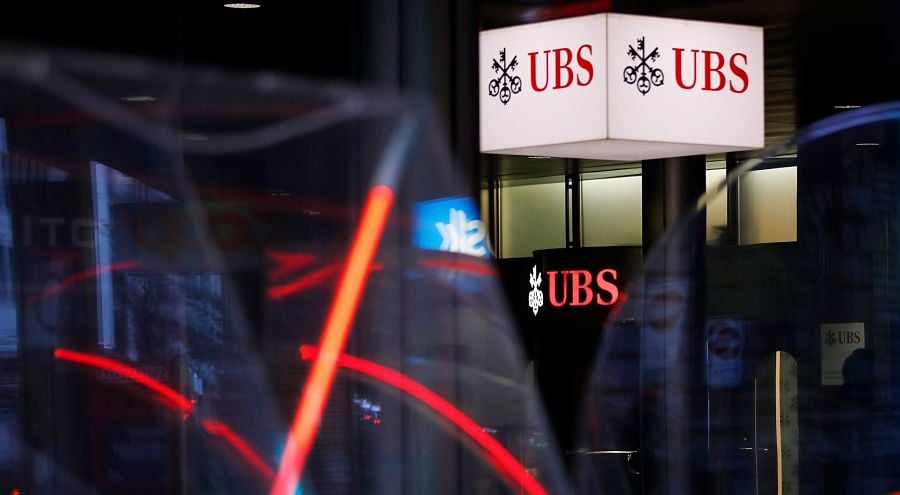

UBS Group outlined major targets for its integration of former rival Credit Suisse, including 3,000 domestic job cuts and more than $10 billion in cost savings, as it posted the biggest ever quarterly profit for a bank on the back of the bargain acquisition that closed in June.
The Zurich-based lender reported a $29 billion profit before tax in the second quarter, a result of the accounting difference between the $3.8 billion price UBS paid for Credit Suisse and the value of the acquired lender’s balance sheet. The bank confirmed that Credit Suisse’s local unit will be completely absorbed into the parent company and the brand retired, likely by 2025.
UBS Chief Executive Sergio Ermotti is working through the implementation of one of the biggest mergers ever in global finance, balancing the opportunities from a client asset pile that’s now swollen to more than $5 trillion with the risks inherited from Credit Suisse’s failed business model. The deal was hastily assembled in March as Credit Suisse hurtled toward bankruptcy after clients lost confidence in the 167-year-old institution.
“There is no room for nostalgic considerations,” Ermotti said in an interview with Bloomberg Television’s Francine Lacqua Thursday. “We are executing on the strategy, we are making very good progress.”
So far, investors and clients agree, with shares surging more than a third this year to hit the highest since the financial crisis in 2008. They jumped as much as 7.2% in Zurich on Thursday.
In a concrete sign of job reduction plans, Ermotti said that UBS will remove some 1,000 positions in Switzerland as a result of overlaps in the domestic banking businesses. A further 2,000 roles are expected to go in the country in group functions. Bloomberg reported the decision on full integration of Credit Suisse’s Swiss unit earlier this month.
That’s likely to be fraction of the roles likely to disappear globally, although Ermotti gave little guidance Thursday on what the overall total will be. The acquisition of Credit Suisse has increased UBS’s workforce to about 120,000, which the bank intends to ultimately reduce by about 30%, Bloomberg has reported.
The lender also signaled that it’s closing two-thirds of Credit Suisse’s investment bank, including almost the entirety of the trading operations, as part of its plans to exit businesses that don’t fit with its existing strategy.
The accounting gain for the quarter eclipses JPMorgan Chase & Co.’s $14.3 billion profit in the first quarter of 2021, the modern record for U.S. and European lenders. Nicolas Payen, an analyst at Kepler Cheuvreux, wrote in a note that the $29 billion accounting gain was smaller than expected following Credit Suisse operating losses and an adjustment of the purchase price, but stabilization of the business was happening faster than estimated.
A UBS veteran who spent his first stint as CEO turning the lender into a model wealth manager after its near failure in the financial crisis, Ermotti is keenly aware of the political sensitivities surrounding the Credit Suisse deal, which he was brought back to oversee. In a surprise move this month, UBS decided to voluntarily give up a safety net negotiated as part of the purchase, including a 9 billion-franc ($9.4 billion) government backstop. That step gives the bank more flexibility, including over the domestic franchises.
While signaling the underlying strength of its business, UBS is now girding investors for the process of integrating its rival, to be “substantially complete” by the end of 2026. The bank is aiming for a cost-to-income ratio of less than 70% by the end of 2026. Yet that process will involve a complex migration of Credit Suisse clients, assets and infrastructure that’s only just beginning.
Ermotti said about half of the $10 billion of the cost savings by 2026 will come from restructuring the investment bank and running down noncore assets. The other half will come from “actions across the rest of our operations.”
UBS said that the wind-down unit, which houses businesses brought over from Credit Suisse that are not compatible with its strategy, had approximately $55 billion of risk-weighted assets at the end of the quarter. Some $8 billion in positions had been exited during the quarter.
The lender said its global wealth management business continued to see strong inflows, with the $16 billion figure billed as the highest second-quarter figure in over a decade. Flows of client funds at Credit Suisse’s wealth unit turned positive in June. The release records Credit Suisse’s final quarter as an independent company.
“UBS clearly faces a huge task in restructuring Credit Suisse, integrating key staff, retaining clients and migrating them to its own systems, solving CS’s litigation issues, etc,” analysts at Vontobel Holding wrote in a note. “This will require significant time and management attention.”

The financial industry veteran will be taking over a broad mandate, including developing investment strategies and overseeing multiple groups across Citi's wealth business.

The 25-year industry veteran previously in charge of the Wall Street bank's advisor recruitment efforts is now fulfilling a similar role at a rival firm.

Former Northwestern Mutual advisors join firm for independence.

Executives from LPL Financial, Cresset Partners hired for key roles.

Geopolitical tension has been managed well by the markets.
Streamline your outreach with Aidentified's AI-driven solutions
This season’s market volatility: Positioning for rate relief, income growth and the AI rebound
